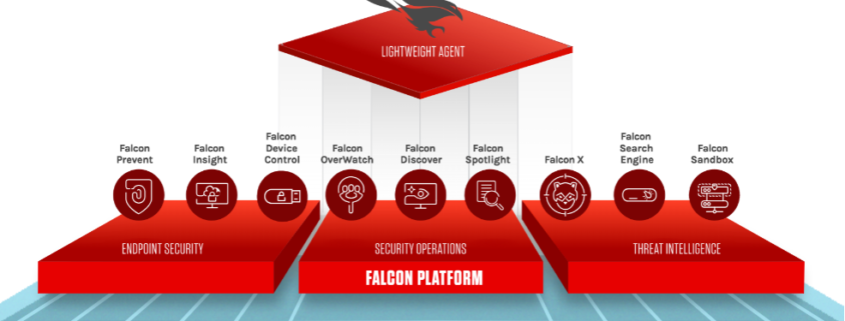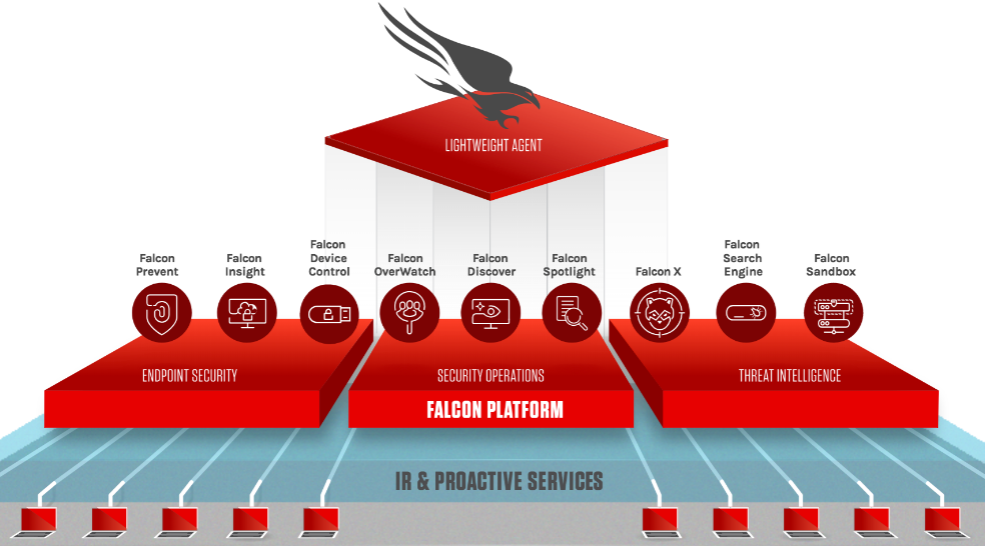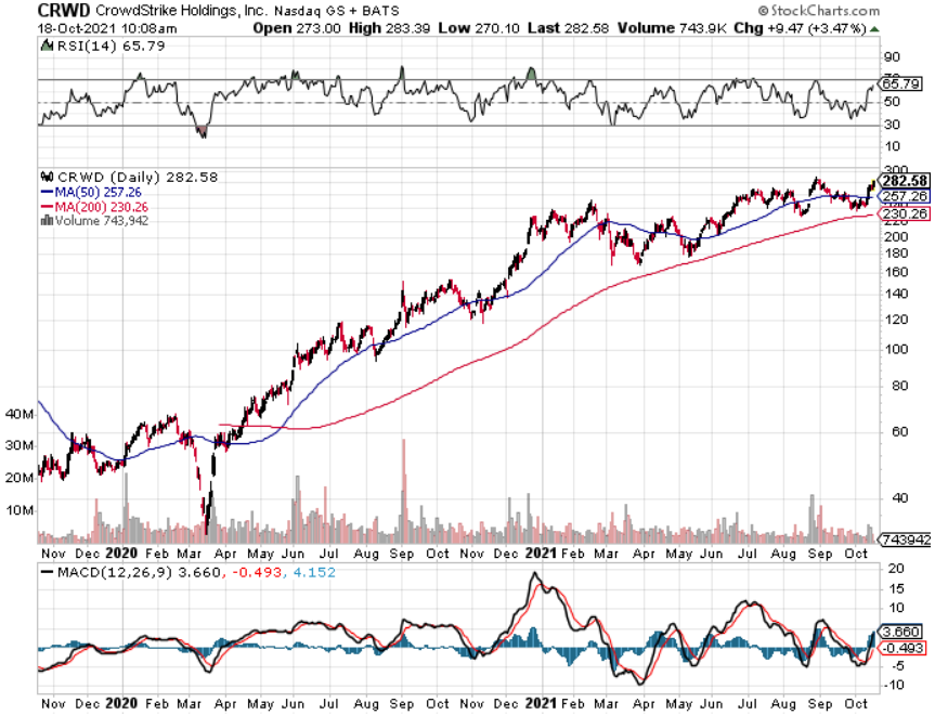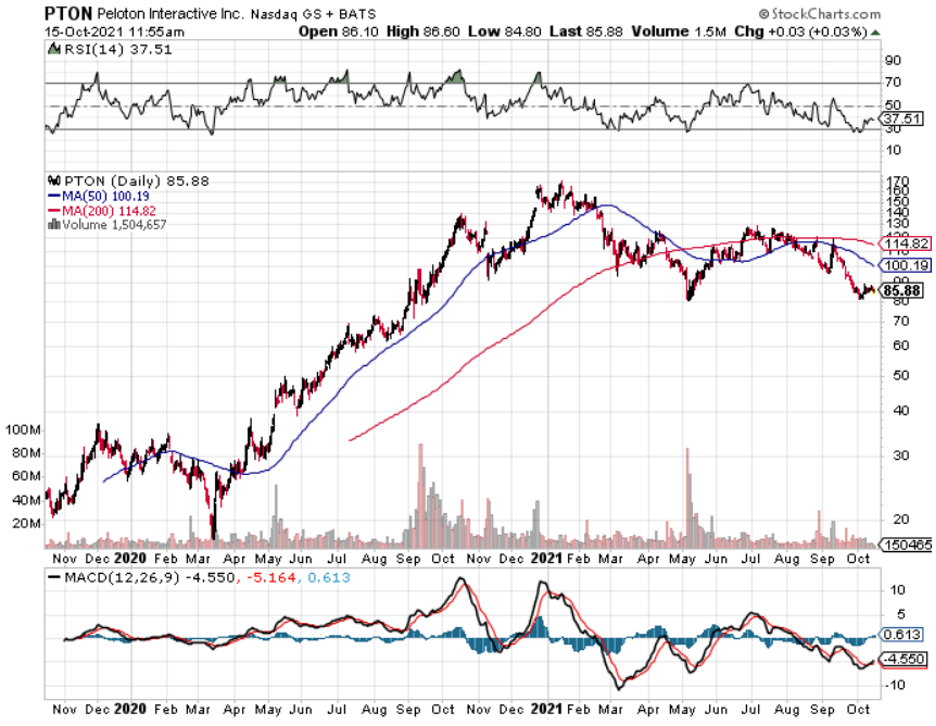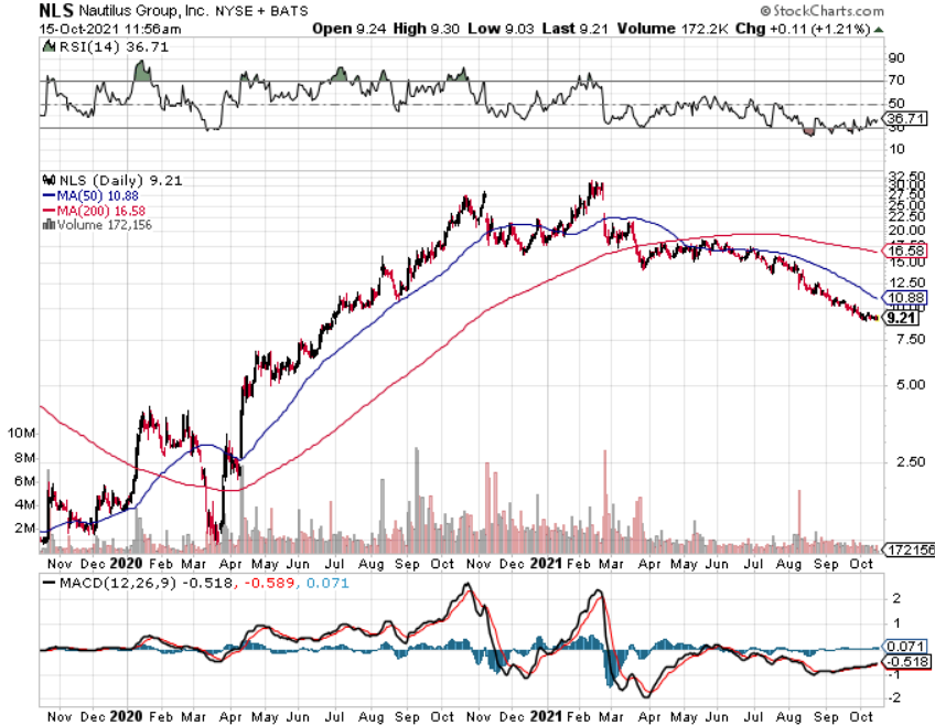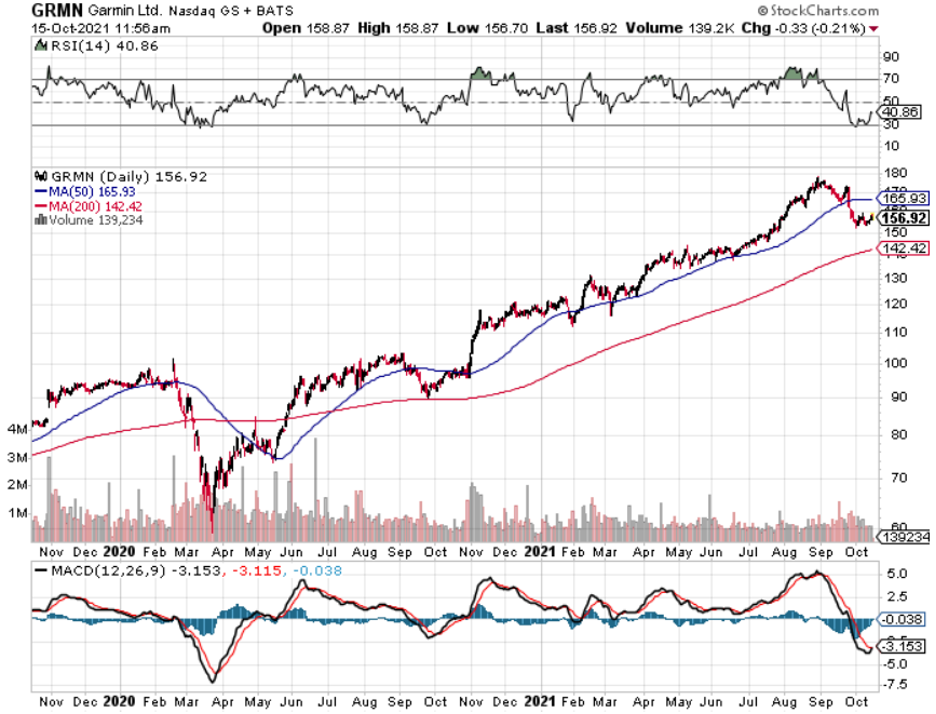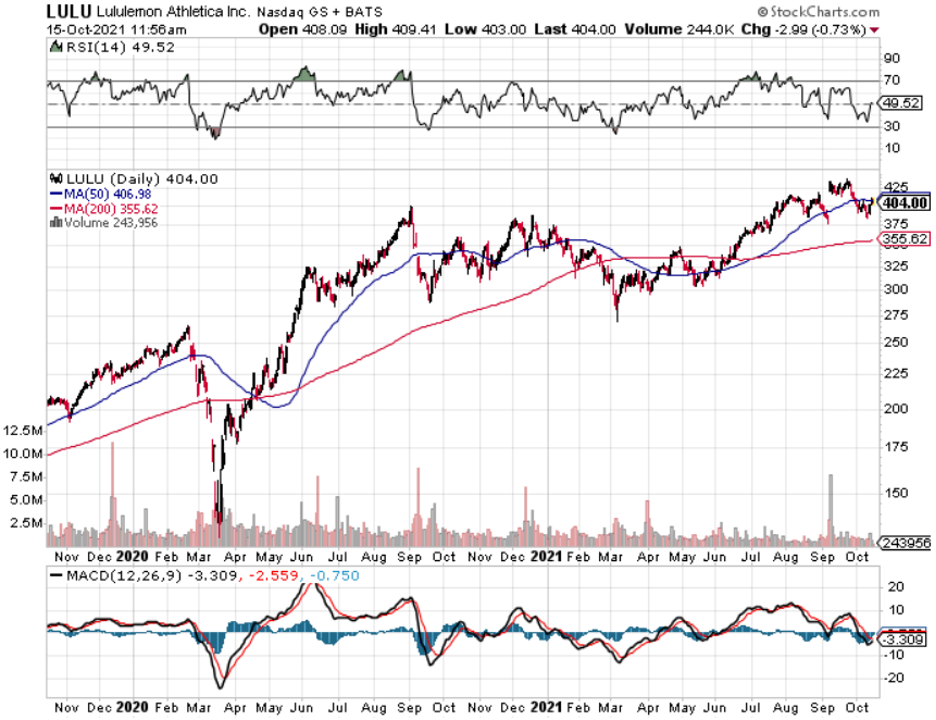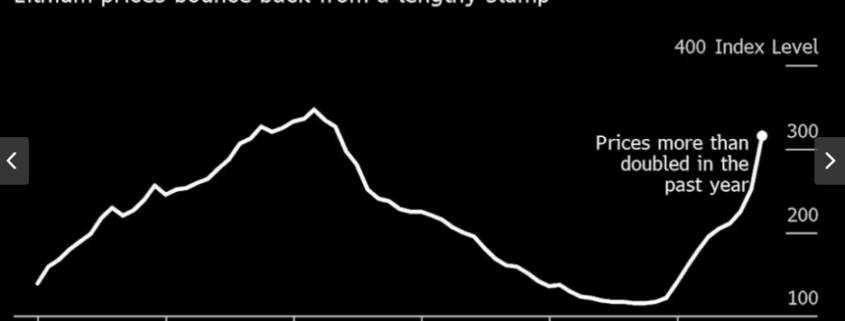“Often you have to rely on intuition.” – Said Founder and Former CEO of Microsoft Bill Gates
Mad Hedge Technology Letter
October 18, 2021
Fiat Lux
Featured Trade:
(THE BEST CLOUD SECURITY GROWTH STOCK TODAY)
(CRWD)
Today’s sophisticated hackers are going “beyond malware” to breach organizations.
These hackers are increasingly relying on hard-to-detect methods such as credential theft and tools that are already part of the victim’s environment.
Falcon is the preeminent security platform built by CrowdStrike (CRWD) to stop breaches via a unified set of cloud-delivered technologies that prevent all types of attacks.
Falcon is the major reason why this tech stock is growing so rapidly and why many investors are jumping on the bandwagon.
The stock is up over 400% in the past 5 years, and this is just the beginning of its growth.
CrowdStrike Falcon responds to malicious challenges with a powerful yet lightweight solution.
It unifies next-generation antivirus, endpoint detection and response, cyber threat intelligence, and managed threat hunting capabilities.
Management’s approach to stopping breaches with the Falcon platform is foundational to CrowdStrike's leadership position and maintaining the overperformance which many investors have been impressed with.
Using AI, machine learning, and an intelligent lightweight agent, the Falcon platform defends against today's most sophisticated threats with unmatched speed and simplicity.
Simply put, companies need to employ a holistic breach prevention strategy rather than overly relying on malware prevention.
Nearly every breach you have ever heard of had two things in common, the victims had both a firewall and an antivirus solution, which is why management decided to build the Falcon platform from the ground up to stop breaches and not just prevent malware.
Meanwhile, competitors have fallen further behind as they continue to blindly promote a strategy that relies on malware prevention versus a comprehensive solution, focused on people, process, and technology that stops breaches.
Today, more than half of the detections analyzed were not malware-based.
Attackers are increasingly attempting to accomplish objectives without using malware.
They are exploiting the proliferation of vulnerabilities and abusing systemic weaknesses in identity architecture to get on the system and then move laterally.
This makes it more difficult for legacy and next-gen malware-focused products to be effective because they are not focused on breach prevention.
To further demonstrate my point, I'd like to share a situation with a certain unnamed company using Microsoft's legacy security products that failed to rise to the challenges of today's adversaries and ended up unnecessarily costing them.
This company experienced a long and difficult deployment process, particularly in low bandwidth environments where endpoint performance was critical.
Notably frustrated, this company began to evaluate alternatives when it was unfortunately hit by ransomware that encrypted their primary and backup data, causing weeks of business disruption and a financial impact estimated to be in the tens to hundreds of millions of dollars.
This is a typical story that is told to CrowdStrike and more will follow as the volume of companies ill-prepared is voluminous.
Many of these damaging experiences by companies are then followed by their in-house IT teams connecting with CrowdStrike’s incident response team to remediate and stabilize their IT operations — followed up with deploying Falcon Complete across their environment.
The Falcon platform processes approximately 1 trillion events per day from millions of agents, delivering unprecedented security insights.
This empowers Falcon to benefit from crowdsourcing and economies of scale unlike any other solution on the market today, which I believe enables AI algorithms to be uniquely effective.
CrowdStrike’s success hinges on growing leadership as the trusted security partner of choice and especially growing the Falcon platform.
Several outside reports have praised Falcon Complete and recognized its strength in its breach prevention warranty, fully remote automated remediation, breadth of threat hunting capabilities, and strong machine learning and artificial intelligence capabilities for detection and response.
The net result of focusing on the Falcon platform to increase revenue upside is the subscription revenue growing 71% over Q2 to reach $315.8 million.
While it’s understandable that subscription gross margin fluctuates quarter to quarter, management expects it to remain solidly within an increased target model range of 77% to 82%.
For the next quarter, CrowdStrike expects total revenue to be in the range of $358 million to $365.3 million, reflecting a year-over-year growth rate of 54% to 57%.
Management has reaffirmed that demand for their Falcon platform is still hot, but I am not thrilled that the total revenue growth is expected to drop to the mid-50% from 70%.
Even though this drop is a seasonal adjustment, it was only just in 2018 when the company was doing $100 million in total revenue, and we are talking now about reaching $2 billion per year after almost surpassing $1 billion per year in 2020.
The stock has substantially more upside and any significant drop should be bought.
We are hovering near all-time high’s so any 5-10% drops should be bought into.
I am still highly bullish on this cloud security company and believe its best days are ahead of them.
“The right moral compass is trying hard to think about what customers want.” – Said CEO of Google Sundar Pichai
Mad Hedge Technology Letter
October 15, 2021
Fiat Lux
Featured Trade:
(DEATH OF THE SPORTS GYM)
(PTON), (NLS), (GRMN), (LULU), (PLNT)
I hope for your sake that you don’t own a gym! — because one area that will certainly experience transformation into mainly smart products is fitness.
In the long term, this would be classified as a terrible investment, and I will tell you why.
The global digitally connected gym equipment market is projected to separate itself from the equipment of the past.
No more bench presses and barbells.
When I say smart fitness products, I am not just talking about Peloton (PTON) — though they are the trailblazer of the group.
Rising technological advancements in the fitness and gym equipment market are happening at warp speed.
Rapid digitalization of the health and fitness industry along with the increased utilization of smart machines is making products better and more efficient.
There are advantages for the consumers like storage, monitoring, and analysis of their fitness performances and the ability to log these details for future references.
New platforms will start popping up that integrate gym equipment and sports equipment along with the training and coaching software.
My personal favorite is Tonal.
This machine is ingenious and uses its smart cable machine to perform strength training exercises.
It’s essentially a 24-inch iPad plastered on the wall with cables and is the Tesla of the smart gym industry with onscreen coaches that guide you through your workout.
Tonal’s AI automatically adjusts weight based on a user’s strength during workouts. Rather than physical weights, Tonal uses electromagnetic force to produce up to 200 pounds of resistance.
Artificial intelligence (AI) is there to track everything you do, analyze it, and decide what you're going to do next, so you end up getting a much better workout, in a shorter amount of time, in the convenience of your home.
With precise data measurement, Tonal can measure the quality of every single repetition, decide how much weight one should lift, and adjust weight in one-pound increments.
To visit their website, click here. (https://www.tonal.com/)
Treadmills are anticipated to hold the largest revenue shares of the market and dominate the market segment on the account of rising instances of cardiovascular diseases.
Strength training equipment is expected to rapidly increase sales by the consumers as well as the increasing inclination of regular fitness enthusiasts over bodybuilding and strength building.
As for specific smart gym stocks, Peloton (PTON) and Nautilus, Inc. (NLS) had huge run-ups in 2020 as business boomed during the health crisis.
These two stocks have come back to life during the “reopening trade.” They after going through a consolidation phase in 2021, but I do believe it is a good time to buy during a low patch.
Conversely, a gym franchise stock Planet Fitness, Inc. (PLNT) had a terrible 2020 because of the mandated closures but has followed up a bad year with a sensational year as in-person gym activity has reversed.
However, I believe the situation will be quite grim in the long haul for in-person gym aficionados, as Tonal proves, gyms will migrate into the confines of our homes simply because the technology now is TOO GOOD to justify getting in a car to drive 30 minutes to the gym, spending 15 minutes changing in the locker rooms, only to then start a workout.
Tonal can almost fit in a kitchen pantry — it’s an iPad with attached cables and nothing more than that.
Its compact nature will attract many gym enthusiasts and one doesn’t need to allocate a whole room for a home gym, even a hallway can suffice with Tonal.
Tonal can get better, but I specifically thought the programmed training dialogue from the A.I. trainers were cheesy.
But it’s good enough that it lays down the marker for in-home smart gyms to gain market share in the future, which is why I believe franchise gyms will be made redundant.
Unfortunately, Tonal is a private company and Lebron James just made a big investment to buy a piece of it.
Alternatively, a direct play that I like for the smart gym is Garmin Ltd. (GRMN) who produces a variety of smart fitness products and specializes in navigation. This stock is immune to the in-person or at-home gym question because their products will get used no matter what.
A second derivative play of the smart gym is the clothes that are needed to work out.
Although not a tech stock, workout apparel stock Lululemon Athletica Inc. (LULU) made hay last year and their stock has basically moved from the lower left to the upper right for the past 10 years with minimal volatility.
So does this mean the end of the sports gym as we know it?
I am not calling for the death of gyms yet, but we have definitely started down that path albeit it incrementally and once Tonal lookalike products become a little more affordable, kiss goodbye to many people going to the gym.
“Technology's always taken jobs out of the system, and what you hope is that technology's going to put those jobs back in, too. That's what we call productivity.” – Said CEO of Salesforce Marc Benioff
Mad Hedge Technology Letter
October 13, 2021
Fiat Lux
Featured Trade:
(AMERICA’S NEW SOCIAL CREDIT SYSTEM IS HERE)
(ABNB), (PYPL), (FB), (GOOLG), (AMZN)
Several external events have prompted Silicon Valley giants to unveil a predecessor to what effectively could become a de facto social credit system by the end of this decade.
I would argue that it is already here, and we are just blind to it.
Take short-term housing agent Airbnb (ABNB) and their business model.
Try searching for a specific listing in any city with a certain date, number of guests.
If you ask other friends and family around the world to input the same data into the same listing, prices will vary greatly.
This is intentionally done because pricing depends on the profile of a certain customer.
If it is $80 per night for me, it could be $100 for the next person.
Why?
Airbnb has an embedded algorithm that conjures up a de facto social credit score, applies it to the situation, and bam — you get your price.
Through my rough research, I have found that males tend to get charged less and especially males wielding a financial profile from a rich country.
I honestly am not sure what data Airbnb is privy to, whether it is only based on a customer’s prior internal Airbnb history, or if it is pieced together from other “sources.”
I am not sure, but if they somehow have access to alternative sources to understand their client better, they might already know that this 47-year-old John Doe booking a 3-night stay in Chicago, Illinois earns $300,000 per year, 1 out of his 5 credit cards is American Express among others, he reported $300,000 of Bitcoin profits in 2020 to the IRS and he owns 3 mansions in Miami, Florida.
It would almost be safe to say that this John Doe would get a better daily rate on the same Airbnb listing than if a 19-year-old student from Albania with no credit card, no assets, and no income tried to book the same listing.
Of course, this also goes for a hardworking single mother trying to take her kids on vacation. So, in the end wealthy men get benefited by a system with discounts that other customers could probably use. But, I guess that's just business in corporate America.
This is just the beginning of the race to pad a soft social credit system so tech companies and others can charge different prices to different people, or maybe not sell some customers services at all.
Relying on an indirect boost from D.C., corporate America will attempt to force the most profound changes our society has seen during the internet era.
Last week, PayPal (PYPL) announced they would start to crack down on users that did not use their platform responsibly.
This group could potentially lose access to PayPal’s services.
PayPal says the collected information will be shared with other financial firms and politicians.
Facebook (FB) is adopting similar practices, recently introducing messages that ask users to snitch on their potentially “extremist” friends.
At the same time, Facebook and Microsoft are working with several other web giants and the United Nations on a database to block potential extremist content.
Some banking platforms already have announced a ban on certain legal purchases, such as firearms.
The growth of such restrictions will accelerate to every part of the business world.
The potential scope of the soft social credit system under construction is enormous and the data exchange practices could have all tech companies swapping customer info in some type of private network that is only accessible to them.
A creation of a “Digital Dollar” would put the tools in place to make sure customer data and flow of money are followed to the very kilobyte.
Working in conjunction with major tech companies, citizens convicted of a crime could lose their ability to transact any business as well.
On a business level, this is great for all the big Silicon Valley companies involved because they would be more efficient at deploying the business intelligence at hand to make money.
I won’t go through the Rolodex of tech companies that are in the data business, but anything involving the cloud and anything in the cloud making great margins, will go gangbusters if this is allowed to happen, which it's looking like it will.
Imagine how conversion rates at Facebook, Google (GOOGL), and Amazon (AMZN) will skyrocket because they already know how to sell stuff to the end guy.
Imagine how Airbnb could ban guests before they even had a chance to destroy somebody’s residence or give generous rates to big spenders that would encourage even more big spending.
This is essentially the dream of Silicon Valley, not for only ad tech like Roku, The Trade Desk, Snapchat, and so on, but the software companies too.
Accurate and voluminous data means better decisions and a super-charged business model.
"Software is like Lego. You can make anything with it, but it may not be appropriate." - CEO of IMC Worldwide Stuart Sherman
Legal Disclaimer
There is a very high degree of risk involved in trading. Past results are not indicative of future returns. MadHedgeFundTrader.com and all individuals affiliated with this site assume no responsibilities for your trading and investment results. The indicators, strategies, columns, articles and all other features are for educational purposes only and should not be construed as investment advice. Information for futures trading observations are obtained from sources believed to be reliable, but we do not warrant its completeness or accuracy, or warrant any results from the use of the information. Your use of the trading observations is entirely at your own risk and it is your sole responsibility to evaluate the accuracy, completeness and usefulness of the information. You must assess the risk of any trade with your broker and make your own independent decisions regarding any securities mentioned herein. Affiliates of MadHedgeFundTrader.com may have a position or effect transactions in the securities described herein (or options thereon) and/or otherwise employ trading strategies that may be consistent or inconsistent with the provided strategies.




